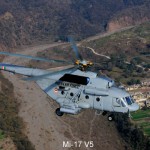Indeed factors like uncertainty of war, need for high assurance level, fear of enemy, competition with other formations, the feeling of my kingdom etc tend to adversely affect human nature. That is why Americans failed at Kasserine Pass in 1943 to a numerically inferior Luftwaffe.
- While most of the surface based resources have to be under command, this is not always so. The reserves at higher level like Corps HQ, Command HQ and Army HQ are released only after battle is joined. They could be placed under the command of any one, basically dictated by unfolding battle/campaign. Compare a Regiment of tanks with a squadron of strike aircraft. Tanks are mobile, but once committed in a battle are of no use to any other formation, at least for quite a while, whereas strike aircraft after delivering devastating firepower in few sorties can be easily switched to another formation in few hours. That is why, aircraft are not put under command lower HQ except at Command level.
Perforce, more time needs to be spent on grasping air warfare since it has multiple routes to victory. For this the notion of aircraft as a “˜flying artillery piece will have to be discarded.
- Related to this point is the misperception in some minds that strike aircraft are flying artillery. While one may grant this (mis) understanding to very rigid minds, the same cannot be true of the modern, flexible and adaptive minds that have started appreciating the multiple routes opened by air dimension to defeat enemy. And wars since 1991 have repeatedly proven it.
- It must be appreciated that as modern aircraft and weapons have improved manifold, their costs have sky rocketed. That while the tasks for air power are continuing to increase, the numbers of aircraft are continuing to reduce. As an example, USAAF at the end of World War II had 68000 aircraft. Today it has 5000. So as numbers reduce, one needs to employ the fewer numbers innovatively to maximise their impact. Like the Israeli AF, which in 1967 War, on 5th June flew about 1000, strike sorties by mere 200 strike aircraft within 6-8 hours. All this can be done only when all aircraft are controlled centrally.
By Air Planner
- The army commander has multiple contingencies planned. His final plan emerges only at the last moment. Even then it is flexible to cater for enemy land commanders emerging reaction. So army planner cannot give a firm detailed plan in advance to the air planner.
- Army Commander needs a lot of assurance from air commander in terms of fire support. Psychological assurance is very important before the battle begins. He needs to be convinced beyond any shadow of doubt that air support will be available for unexpected critical situations, no matter what the state of air war is. But this will happen only during emergent situations and not as a SOP.
Professional approach will pay far greater dividends than an approach, which emphasises physical togetherness as higher priority for enhancing jointmanship between air warriors and others.
- Often army commanders are pre-occupied by direct threats from the enemy. So he needs to be goaded towards selection of targets, which have indirect bearing. Dumps, lines of communication, POL stores, supply vehicles and even Reserves at Army/Corps level can be considered in the indirect category. If army commander is cajoled to share the air commander’s wide view, typically within 300-500 Km radius, he will be able to specify these indirect targets more easily. These indirect targets will not change much with newer contingencies that the army commander may face. Which means that air planner can do necessary planning work on identified ‘indirect’ targets before the battle is joined. This will allow more efficient, rapid and effective air power response.
Conclusion
Jointness or Jointmanship indeed is an inescapable necessity for modern wars. To win quickly, precisely with least casualties to own side as well as the civilians on the other side. Understanding the characteristics of each Service’s way of warfare and factoring it in joint planning can enhance Jointmanship.
In the modern warfare air and space have come to occupy the dominating position. Moreover, air power opens up multiple routes to victory in comparison to only a single route, which existed, in pure land warfare and in naval warfare. This single route was often through the path of heavy attrition and protracted struggle barring few exceptions heralded by Napoleonic way of manoeuvre and deception warfare.




